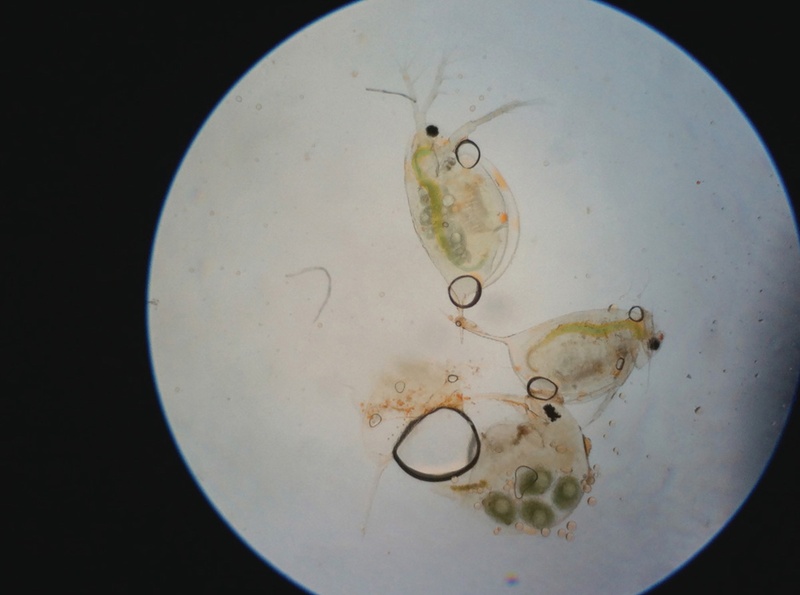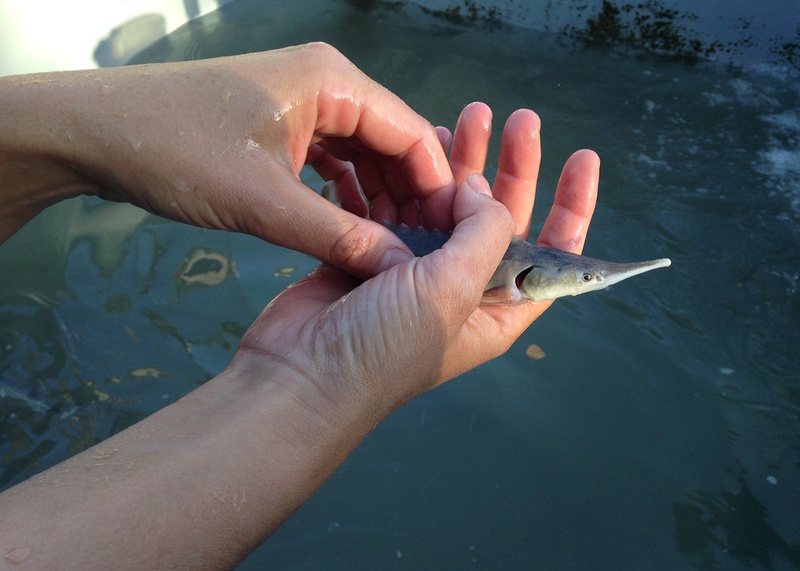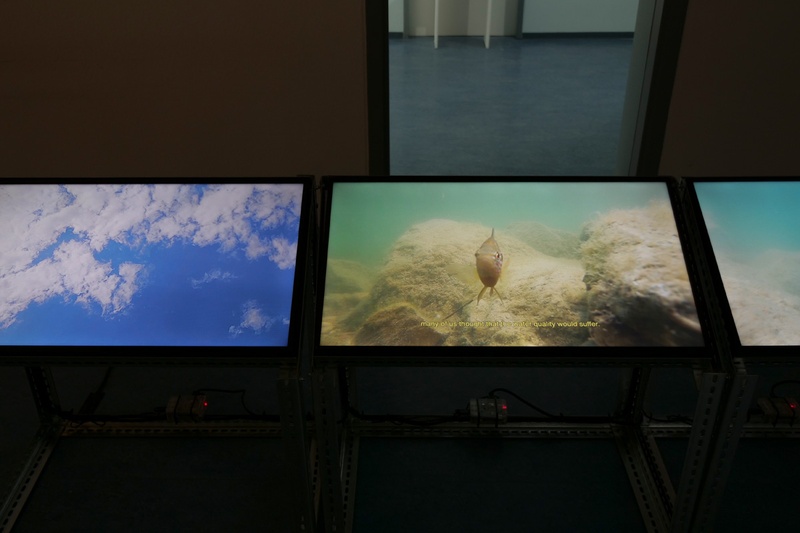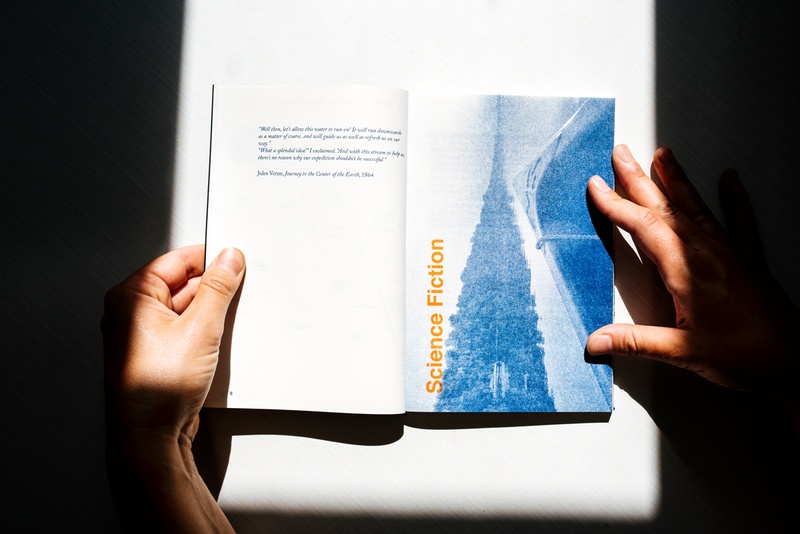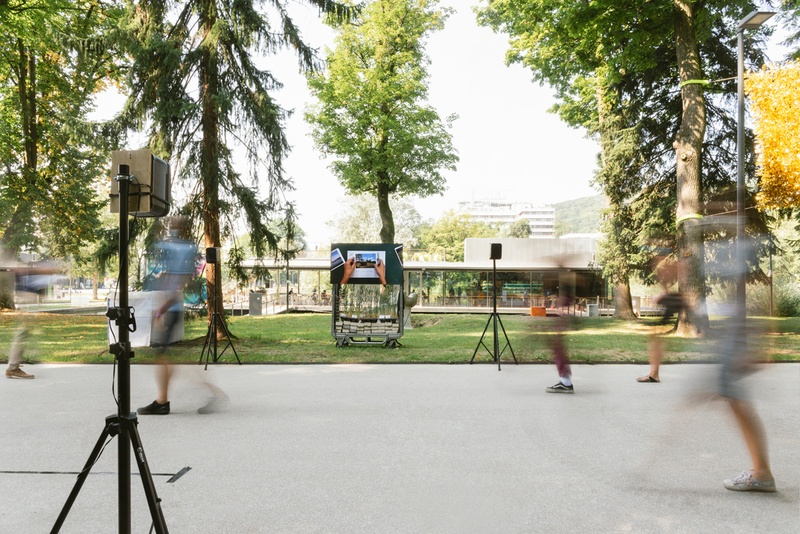What does care mean to you in your practice?
Four years ago I would’ve said, “I don’t work with care,“ as I didn’t want to appear over-emotional or irrational. I started out as a scientist and then began making art projects but actually, I don’t want to distinguish the two anymore. I want to investigate things and look at different layers and how they shift and where can I position myself within this.
The first project for which I combined art and ecology was about clouds as in the huge network systems, and their relation to actual, meteorological clouds. I think at this time care was maybe a topic in my work but it was very hidden. I looked at the cloud in a very watery sense because that’s the element I know best and like a lot and it’s remained a topic of mine since. I grew up along the Danube in Austria. I was fascinated by this ever-present mass of water flowing downstream and wanted to know what the end of the river looks like. I think that curiosity eventually turned into care.
What does the word care mean to you?
I didn’t always feel comfortable using the word care concerning my work because the German word for care is “Sorge” which is the same word used for “worry/sorrow” so it has a bit of a negative connotation and feels very heavy. Now I’ve made peace with the term care and to me it now means having the choice to look and hear more closely and diving deeper into a topic. To start from something very local and gradually finding more and more entanglements that flow together. We need to somewhat get rid of the sorrow and then care becomes playful and that’s allowed because care isn’t just super strict or serious.
from Be Water My Friend. Photo by Christina Gruber.
You said you don’t want to separate ecology and art, but how did your art practice join your practice as an ecologist?
I moved to Portugal for one year while I was still in my undergraduate studies to become a landscape architect. I grew frustrated by being stuck in an office and wanted to go on the field again. I started listening to myself and began to imagine what would happen if I would realize all the project ideas I was putting in my notebooks. Portugal didn’t work out and when I returned to Austria I was really like, “I don’t want to tell anyone that I fucked up,” because I had said goodbye forever. So, I came back and said, “No, no all good, I just want a career change.” Then I studied Site-Specific Art. It was very much about how we can approach landscapes in different ways. We’re inhabiting a super diverse planet, so it also made sense to diversify my approach.
The word care is connected to sorrow also, to me, implies a sort of power dynamic. Like if I feel sorrow for the thing I am taking care of, I’m in a more dominant position. I don’t think that one part has to be more powerful—like you feel that the sturgeons are also taking care of you.
Yeah, and it’s toxic because you get trapped into thinking: I’m the one caring for you. I think the moment you think this, it’s exactly the other way around. I think the term “care” is pretty poor and “reciprocity” is better because it implies mutual care at the same level. This is what we need to think about in our work. We’ve never been able to investigate other species as well as we can now. There’s so much intelligence out there and we previously didn’t know how to tackle it and doing this is also a form of care.
And how did you begin to combine sound with your ecology and art practice?
It started in 2017 when I was traveling down the Mississippi River. I wanted to investigate the relationship between rivers and people and how the river is influencing people’s lives. I wanted to make a movie but it didn’t feel right. I was frustrated and knew I had to change my approach. I spent a lot of time in the swamps and talking to people living in this complex ecosystem. Many mentioned sound as being important to them and I began to think about how sound could be transposed into the things I want to investigate. I got my first recorder and an underwater microphone to start a series of recordings while looking at different ways of archiving. How can one archive pieces of land that are continuously being lost to global warming? I saw my recordings as the last time that a little piece of marshland was able to be listened to before disappearing into the Gulf of Mexico.
sterlet. Photo by Christina Gruber.
Working with sound is maybe a less invasive way of approaching the water and those connected to it?
Yes, as a freshwater ecologist you always extract things out of the water but by dipping a little microphone into the water, you do the opposite of invading. It’s the attempt to listen to what is already there, leaving it there but taking a part of it with you in form of a recording. And sound displays our porosity. It really goes through us and we cannot shield ourselves from it.
You are taking care of sturgeons currently?
We are helping them repopulate in a hatchery but I’m also using sound to work with them. Sturgeons have been on Earth for over 200 million years but we don’t know where they travel to or where they live. We don’t know anything about their habitats. By attaching little sound sensors to them, we get a signal whenever they pass the receiving stations we installed along the river. And this is weird because then you have a sturgeon making a sound, but it’s actually not their sound, but a mechanical beep. At the moment there’s very little known about sound production in sturgeons, which is also quite cool. They are known to make sounds called sturgeon thunder, but only at certain times of the year. Along with the acoustic telemetry to find out where their habitats are, I also record with a hydrophone so that one day I’ll hopefully detect them producing their sounds. I research ways in which humans can hear something that is actually inaudible to them like sturgeon sounds.
So that means if your hydrophone would pick up a sound they make, you still wouldn’t be able to hear it?
I wouldn’t be able to but I got in contact with a woman who is good at processing sounds and transforming them. We are testing out if the sturgeons’ sound appears on the spectogram.
In one of your works you pose the question: Can listening once again become one of the main assets to learning and caring for our environment? I think that’s interesting. And I want to specifically ask what the “once again” refers to.
We had long discussions in the research group I formed about how listening to the environment can be a way of navigating for humans. You hear before you can see. It’s not something we need to learn, it’s an already-built-in sensor, and that’s why I added the “once again.”
What about acoustic detection by artificial intelligence?
It’s like having an artificial ear in a way. It will never be as good as a human ear or any other ear from non-humans. We start listening in the womb, we have this nuanced knowledge about our environments from listening all the time. You close your eyes and vision is gone but listening never stops. It’s a huge ability and we don’t use it as well as we could.
Suns of the Cloud. Photo by Ana Likar
Do you think listening can become one of our main assets for learning about the environment?
At least a way to help us approach the environment and to feel more connected to it. We are super overfed by images. For me, images don’t work anymore but if I hear a loud drilling sound from underwater mining it really goes into the marrow of my bones and I can’t ignore it. It’s immediate and close and I think that’s something we need at the moment.
Earlier you mentioned that you care for the sturgeons but that they also care for you. How would you explain the care work that they do for you?
I felt this notion during my second year of working with the sturgeons. I felt a bit like a “lifesaver/species saver” who rescues the world, very empowering, but I also felt a bit guilt-ridden.Then the pandemic hit and I felt trapped like in one place, like an indoor cat, but there was one exception: The sturgeons were safe for me to meet, they were my ticket out. People tell me it’s very esoteric and that the only relationship we have is based on me giving them food but no, there’s a bond. Last summer I read *Braiding Sweetgrass *by Robin Wall Kimmerer and Donna Haraway and both speak about reciprocity and I think that’s exactly what is happening. I know the sturgeons but they also know me somehow. It takes away the “I’m human so I’m above the animal I take care of.” I don’t feel like this—they are mightier than me. They can survive in the river—I can’t. That’s why I think animals are so great: They are just good out there [in nature] and we’re not. Being with sturgeons makes me feel more embedded in this whole thing we call “out there.”
We talked about listening to the fish but how do fish listen? Is it correct that they use their entire body to hear? Is it part of your practice to try and find a way to listen as they listen?
I like to imagine the possibilities we have as humans to get into this kind of experience. I think we have a tool, our body, we just need to work on it. I had intensive talks about this with many including writer and curator Margarida Mendes who, among other things, works on ocean sound pollution. She said the one thing we could use to try and perceive our surroundings as fish do is our fascia. Fish have an organ called the lateral line, a system of sensory organs used to detect movement, vibration, and pressure gradients in the surrounding water. So perhaps by training our intermuscular system we could hear as they do.
And the other way I imagine that could come close to it is being exposed to strong bass. Imagine being at a club or a concert and the sound is super loud and you have all this bass that is going through your body—you’re vibrating. I imagine that that’s pretty much the experience a fish has. It’s what I tried to achieve with my last sound installation together with composer Samuel Hertz by using eight different speakers. The visitor walked through the installation, the sound always hitting them from different angles turning the event into a very physical experience. I think we can tune into perceiving sounds with more than just our ears and I think we already do.
From Mud to Outer Space. Photo by Matthias Nemmert
What makes you think that?
Just being in my flat, I can feel micro eruptions that a passing tram produces. It’s so noisy that the sound waves hit the building making it shake. I think of this as a very intense sensation.
The term self-care has gotten super popular. Do you find that the term can be a bit problematic?
Yes, the term is troubling. You have to be cautious that your self-care doesn’t make you too egocentric. It can work for a little while but ultimately it isn’t very satisfying. Now we can buy little self-care packages for €100 but I don’t think it’s that easy. It’s something we need to reflect on and critique. We know that individuality doesn’t exist by definition. So maybe if self-care means that I take care of, I don’t know, the two kilos of bacteria I carry within me, then okay because we are talking about mutual aid again but if we think we only have to take care of ourselves then we are on the wrong track.
Yet, to a certain extent, you need to take care of yourself to take care of others.
That’s true.
But, like you said, taking care of others is also a form of self-care. So it can be a very fluid cycle.
Yeah, and for sure it’s also a vicious cycle and I don’t know what the best way is because you can also over-care for others and lose yourself as a result. I guess it’s about finding a balance.
By listening to animals and nature, we can probably learn a lot about self-care and care in general.
That’s true and that helps to put things into perspective. Like when I have to get up at 5 am to go to the hatchery and I don’t want to because I feel sick but there are 20,000 sturgeon waiting for me and that immediately makes me feel good.
I think you can only care about something if you know of it. I know of sturgeons and can therefore take care of them because they are in my field of interest. So, knowing and caring are very linked.
Taking care is a way to map your world. I’m going to be seeing the things I care for and I have to know the things in order for me to take care of them but firstly, I need to care about something so that I have the interest to get to know it.
Maybe you don’t know what it is, but you care for it and then you’ll get to know it. And sometimes you don’t even need to know so precisely. Or you just find your own definition. And then intuition comes, which I think is very important for care.
Zugzwang. Photo by Matthias Nemmbert.
Christina Gruber Recommends:
-
Get in touch with your local waterbodies (e.g. lakes, rivers, sea, ponds, fountains) the best way is to swim and float in them.
-
A Nourishing Network: A publishing project that documents and circulates current research done by a network of artists, activists and programmers that collaborate with the Austrian net culture initiative servus.at.
-
Allora & Calzadilla (in collaboration with Ted Chiang), “The Great Silence”

